PHILIPPINES
History

History
Cities in PHILIPPINES
| Manila |
History
Antiquity and Middle Ages
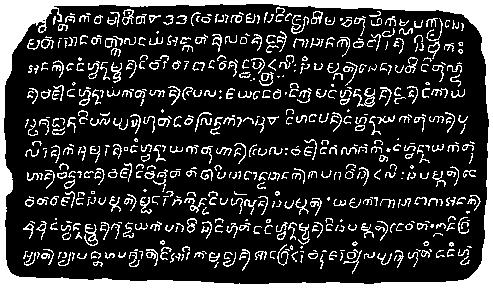
Not much is known about the oldest history of the Philippines, but it is generally believed that the negritos were the first inhabitants of the Philippines. The ancestors of these little black people are believed to have migrated to the Philippines via land bridges from Southeast Asia tens of thousands of years ago. The oldest fossil human remains date from about 30,000 years ago, but stone objects date back to 150,000 years ago.
After the last ice age, seafaring peoples of Mongol descent migrated to the Philippines; initially the proto-Malays in the period 2000 BC. to 1000 AD .; they were driven to the mountainous regions by the late Malays or coastal Malays. Most of the current population descends from the late Malays. These people survived shifting cultivation and fishing.
Due to the isolated location of the archipelago, the emergence of Buddhism and Hinduism has not had a major influence on the cultural development of the Philippines. Much more important were the trade contacts with other Malay peoples and especially with the emerging naval power China. The first contacts with the Chinese date from about 2000 years ago and reached their peak in the period between the 10th and the 13th century.
In the 15th century, Islam was introduced to the Philippines from Indonesian islands, including Borneo. In the 16th century, Islam had already penetrated northern Luzon, but the Catholic Spaniards managed to push back Islam far. At present, the Muslims mainly live in the Sulu Archipelago and parts of Mindanao and Palawan.
Spanish rule
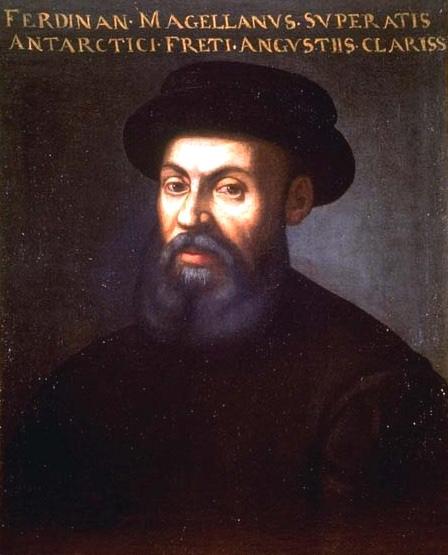
Portuguese explorer Fernão Magalhães was the first European to reach the Philippines on March 16, 1521, something he would regret. On April 27 of the same year, he was killed by hostile Filipinos led by the first Filipino folk hero Lapu-Lapu. Still, the Spanish claimed possession of the Archipelago de San Lazaro, as the Philippines was called at the time. This brought them into conflict with the Portuguese, who also claimed the Philippines. Ultimately, the Treaty of Zaragoza arranged for the Philippines to fall within Portugal's sphere of influence. Still, the Spaniards continued to send expeditions to the Philippines. In 1542 the archipelago's name was renamed "Islas Filipinas" by Ruy Lopez de Villalobos
In March 1565, an expedition led by Miguel Lopez de Legazpi de Visayas, an archipelago in the center of the Philippines. Despite resistance from the local population, the island of Cebu was first conquered and then several other islands. The later capital of Manila was established on the conquered island of Luzon in 1571 and in 1572 a large part of the Philippines was again in Spanish hands. Only parts of the south remained in Muslim hands.
Spanish missionaries then played an important role, not only in the Christianization of the native population, but they also built schools, churches and houses, among other things. Spanish governors were administratively in charge of a province.
Manila was attacked in the second half of the 16th century and the first half of the 17th century by Chinese, Japanese and then by the Dutch. It was not until 1646 that the Spaniards managed to defeat the Dutch definitively during the "Battle of Manila". In 1762 Manila was finally conquered, but this time by the British. However, the occupation did not last long; in 1764 the city was recaptured by the Spaniards.
Nationalist ideas are emerging
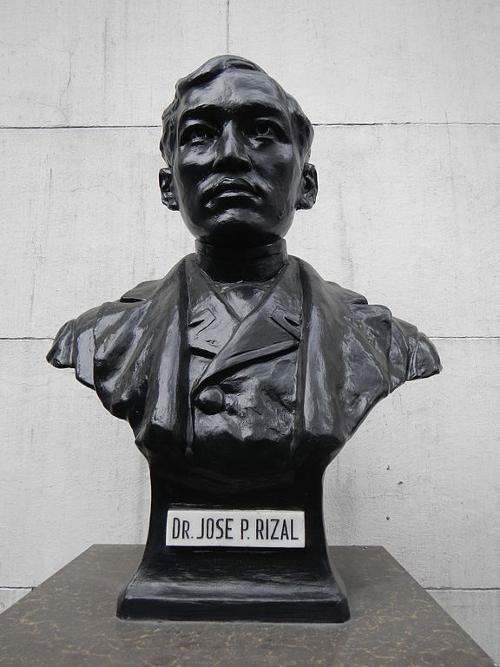 José Rizal, PhilippinesPhoto: Ramon FVelasquez CC 3.0 Unported no changes made
José Rizal, PhilippinesPhoto: Ramon FVelasquez CC 3.0 Unported no changes made
Until the first half of the nineteenth century, the Spaniards were also regularly attacked by the native population, but they were able to easily counter these attacks. During this time the trade monopoly of the Spaniards gave way to free trade. Agricultural products in particular were in great demand and the land tenants and traders became increasingly prosperous as a result. In the meantime, this population group consisted largely of Mestizos of Filipino-Spanish descent, who developed into a new elite in the nineteenth century. At the end of the 19th century, they had even reached the point where the children of this group could study at the University of Manila or at important foreign universities.
On their return, they brought back to their homeland ideas and feelings of freedom that contributed to the emerging Philippine nationalism. The nationalists were "helped" somewhat by an incident in 1872. A mutiny by Filipino soldiers got out of hand and in retaliation for the insurrection, three priests were publicly executed and then proclaimed martyrs of the Philippine resistance. Filipino students abroad took advantage of this to create the "Propaganda Movement", which peacefully sought to make the Philippines an independent state. The main leaders of this movement were Dr. José Rizal, Marcelo H. Del Pilar, Graciano Lopez Jaena and Juan Luna.
Rizal was the most important person in this group and after living abroad for a while he founded the "Liga Filipina". Although not even extreme in character, this was enough for the Spaniards to exile him along with other reformers to Dapitan on Mindanao's north coast. In the same year, Andres Bonifacio founded the somewhat more violent, secret separatist movement Kaitipunan.
In August 1896 the bomb finally burst; a call was made for the struggle for independence, after which an uprising broke out in Luzon and spread like an oil slick all over the country. The Spaniards reacted strongly and many Filipinos were imprisoned and executed, including José Rizal on December 30, 1896. Bonifacio was also killed and in 1897 the new leader of the revolution became Emilio Aguinaldo.
Under American rule
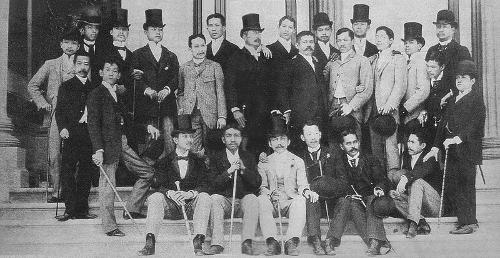 Ilustrados PhilippinesPhoto: Public domain
Ilustrados PhilippinesPhoto: Public domain
In 1898 war broke out between Spain and the United States, with serious consequences for the Philippines. The Americans initially supported the independence fighters in their struggle and on May 1, 1898, the Spanish fleet in Manila Bay was defeated. The Filipinos declared independence on June 12, but soon learned that the Americans had a dual agenda at the time. Secret negotiations between the Spanish and the Americans resulted in the Philippines being handed over to the Americans in December.
Violence immediately broke out between the Filipinos and the new colonizer. In 1901 Aguinaldo was captured and in 1902 the Philippine-American War ended, which killed 220,000 mostly Filipino civilians. The Americans then took a smart approach by appointing people from the top layer of the population ("illustrados") to high posts and investing heavily in things like education, health care and infrastructure. As so often, the poor agricultural workers hardly benefited from this and in the 1930s riots broke out locally. The Americans tried to change this by distributing land owned by the Catholic Church to the population. Even now, however, the large landowners benefited the most.
In 1916, the Philippines was granted a great deal of autonomy, and on November 15, 1935, the Philippines was granted Commonwealth status with its own government and Manuel L. Quezon as the new president. The United States Congress also passed a law stating that after a preparatory period from 1935 to 1946, the Philippines would become independent.
WWII
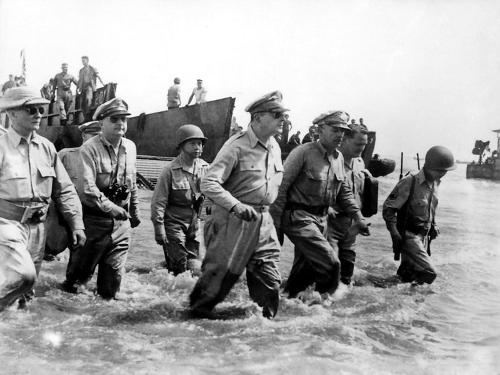 General McArthur lands in Leyte, PhilippinesPhoto: Public domain
General McArthur lands in Leyte, PhilippinesPhoto: Public domain
The Philippines did not emerge unscathed from the Second World War. On December 10, 1941, the first Japanese troops landed on the north coast of Luzon, and Manila was taken on January 2, 1942. On May 6, the Philippine-American forces surrendered. The Japanese portrayed a straw man in the figure of José Laurel, but provoked resistance because of their tough policy against the population. In particular, the organization Hukbo ng Bayan Laban sa Hapon (Huk = People's Army against Japan) strongly opposed the Japanese, and also against the large landowners.
The previously fled American General MacArthur returned to Philippine soil on October 20, 1944. The invasion was launched on the east coast of the island of Leyte and from there, with the help of Filipino guerrillas, the Philippines was recaptured from the Japanese.
Philippines independent
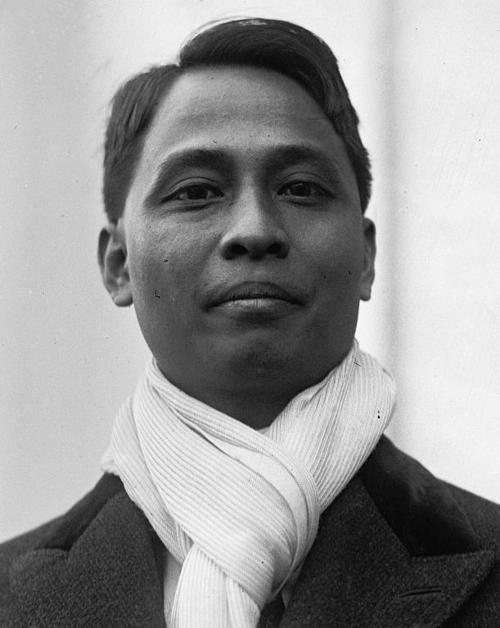 Manuel Roxas 1st President of the PhilippinesPhoto: Herbert A. French in the public domain
Manuel Roxas 1st President of the PhilippinesPhoto: Herbert A. French in the public domain
The Second World War had as a direct result that the Philippines finally gained independence. Despite the great influence of the Americans in the economic and military field, the Philippines was an independent republic from July 4, 1946, with Manuel Roxas as its first president. The great American influence meant that the poor rural population did not fare much better and again the Huk movement rose up, especially under the rule of Roxas's successor, Elpidio Quirino. However, Defense Secretary Ramon Magsaysay made good decisions by setting up a social reform program for the benefit of the poor. In addition, the Huk movement was tackled even more firmly. This made Magsaysay very popular among the population and it was therefore not surprising that he won the presidential election in 1953 with flying colors. However, on March 17, 1957, Magsaysay was killed in a plane crash and was succeeded by Presidents Carlos Garcia, Diosdado Macapagal and Ferdinand Marcos.
Period Marcos
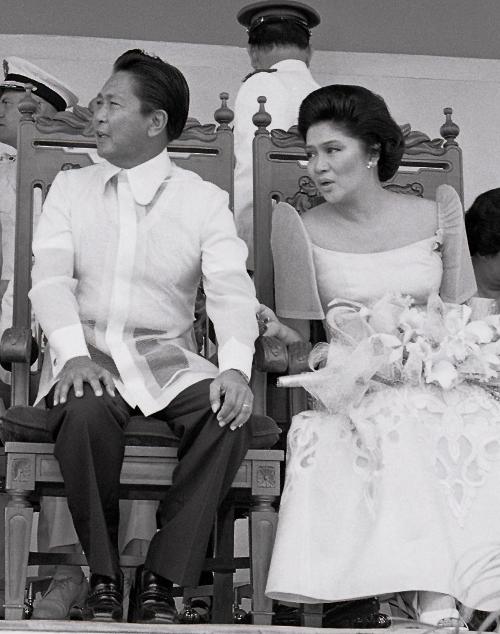 Marcos family, PhilippinesPhoto: Al Ramones & Domie Quiazon in the public domain
Marcos family, PhilippinesPhoto: Al Ramones & Domie Quiazon in the public domain
Ferdinand Marcos first became president in 1965 and was re-elected in 1969. Because the position of the rural population was still dire, a new resistance group was also formed in 1969, the communist New People's Army (NPA). Not much later, a secessionist movement called the Moro National Liberation Front (MNLF) was founded by rebellious Muslims in the south of the Philippines. As a result, and due to the high crime rate, Ferdinand Marcos declared martial law on September 21, 1972. He managed to drastically reduce crime rates, but once again announced reform programs failed to materialize.
Because Marcos took all power, he started to behave like a dictator. Many political opponents were imprisoned, murdered or disappeared without a trace. One was the popular politician Benigno Aquino, who was murdered at the Manila airport on August 21, 1983, after returning from exile in the United States. Hundreds of thousands of Filipinos took to the streets across the country, indirectly bringing the Marcos rule to an end. His main opponent in the February 25, 1986 presidential election was Benigno Aquino's widow, Corazon ("Cory") Aquino.
The election victory was claimed by both Marcos and Aquino. However, fraud had been committed on a large scale by Marcos, which resulted in spontaneous popular resistance. When Defense Minister Juan Ponce Enrile and Army Commander Fidel Ramos also sided with Aquino with some of the armed forces, Marcos was forced to flee abroad (Hawaii).
Period Aquino
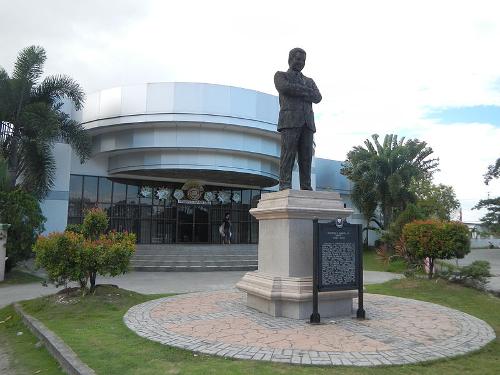 Statue president Aquino, PhilippinesPhoto: Ramon FVelasquez CC 3.0 Unported no changes made
Statue president Aquino, PhilippinesPhoto: Ramon FVelasquez CC 3.0 Unported no changes made
For the common man, however, Aquinas' reign did not turn out to be of much benefit. The poorest people remained poor and the land reform proposals fell through after resistance from the large landowners. In addition, right-wing groups tried several times to carry out a coup d'état and left-wing resistance movements were also regularly made known. Negotiations with these groups were unsuccessful.
A new constitution, reverting to the American model, was ratified by referendum in 1987. The 1992 presidential election was won by Fidel Ramos, a nephew of the former dictator. He made a case for fighting corruption, restoring political stability and reducing unemployment. In addition, more foreign investors were attracted and the infrastructure improved. Through all of these measures, there was marked economic growth, temporarily dampened by the 1997 financial crisis in Southeast Asia. In September 1996, peace was signed between Ramos and the separatist Muslim movement MNLF, ending nearly a quarter of a century of fighting on the southern island of Mindanao that killed at least 50,000 people. The Moro Islamic Liberation Front (MILF) continued its fight for an independent fundamentalist Islamic state.
The 1998 presidential election was won by popular vice-president Joseph Ejercito Estrada. Under him, corruption really took off and his plans for constitutional changes faced strong extra-parliamentary opposition, of which the Roman Catholic Church played a major role.
21st century
In 2000, several Islamic armed groups came back into action. On the island of Mindanao, a civil war even broke out between guerrillas of the independent MILF and the Philippine army. In April, several dozen European tourists were held hostage by the splinter group Abu Sayyaf on Jolo Island. Only in September were the European hostages released after payment of a million dollars by Libya.
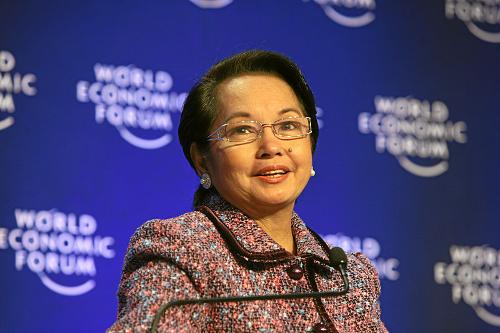 Gloria Macapagal Arroyo, PhilippinesPhoto: World Economic Forum CC 2.0 Generic no changes made
Gloria Macapagal Arroyo, PhilippinesPhoto: World Economic Forum CC 2.0 Generic no changes made
All this led to major popular uprisings in January 2001 and then to the resignation of Estrada, who was also suspected of corruption. The rebels were again helped by the military and the Roman Catholic Church.
He was succeeded by Vice President Gloria Macapagal Arroyo, the daughter of former President Macapagal. When Estrada was arrested at the end of April, a popular uprising broke out in Manila and another attack on the presidential palace followed on May 1. A coup seemed imminent and Arroyo proclaimed a "state of rebellion" for several days. The May 14 elections were won by the People's Power Coalition of Arroyo. A truce was signed with the Moro Islamic Liberation Front in October, but a candidate from Arroyo was elected governor.
Abu Sayyaf made his mark again by kidnapping 20 civilians, including three Americans. Several hostages managed to escape and one of the Americans was beheaded. In late December, President Arroyo rejected US military support in the fight against Abu Sayyaf. Washington repeatedly pointed to contacts between Osama bin Laden's al-Qaida network and Abu Sayyaf.
In 2002 criticism of Arroyo took up. She had championed the fight against corruption, but achieved little success. Her PR advisor even had to resign under suspicious circumstances.
The United States was nevertheless allowed to send troops to the Philippines because of the alleged links of the Muslim extremist Abu Sayyaf with the al-Qaida terror network. In mid-2002, Abu Sayyaf leader Aldam Tilao was killed.
Skirmishes between the Philippine Armed Forces and the New People's Army (NPA) of the banned Communist Party of the Philippines (CPP) intensified over the course of 2002, and in August President Arroyo declared all-out war against the NPA. The Netherlands was indirectly involved in the conflict because party leader Sison stayed in the Netherlands as a political refugee.
Also in 2003, Arroyo failed to solve the social and economic problems. Things continued to be very turbulent in the Philippines, especially in the southern part of the country that was ravaged by the civil war. On July 26 and 27, 2003, 300 soldiers occupied the business center of the capital Manila, after which they called on the population and fellow soldiers to take to the streets en masse and support the insurgency. They protested against corruption within the army and the government's failure to act against it. Because the call was not answered, the rebels surrendered without a fight after 24 hours. On November 8, the air control tower of Manila's international airport was occupied for several hours by two activists fighting against corruption. They were shot in combat.
The struggle between the Philippine armed forces and the NPA, the armed arm of the banned communist party, intensified in the course of 2003. The military declared war on the Islamic resistance movement in Mindanao MILF in February, but talks resumed mid-year, leading to a cumbersome and fragile truce. In December, 'Commander Robot', a notorious leader of the Abu Sayyaf terror group, was captured. In general, however, the fight against terrorism was difficult - despite financial help from the Americans, American military support and the joint US-Philippines military exercises.
In May 2004, Macapagal-Arroyo was re-elected President of the Philippines. The incumbent president won nearly a million more votes than her closest rival, movie star Fernando Poe Jr. Arroyo is repeatedly confronted with corruption scandals and the period 2004-2008 has been unsettled. In the 2007 parliamentary elections, 120 are killed in electoral violence. In June 2009, the military seized a large MILF base in Mindanao. On August 1, 2009, former president Aquino dies. In February and March 2010 there are clashes between Abu Sayyaf's army and rebels. Beningno Qquino III is elected president in June 2010.
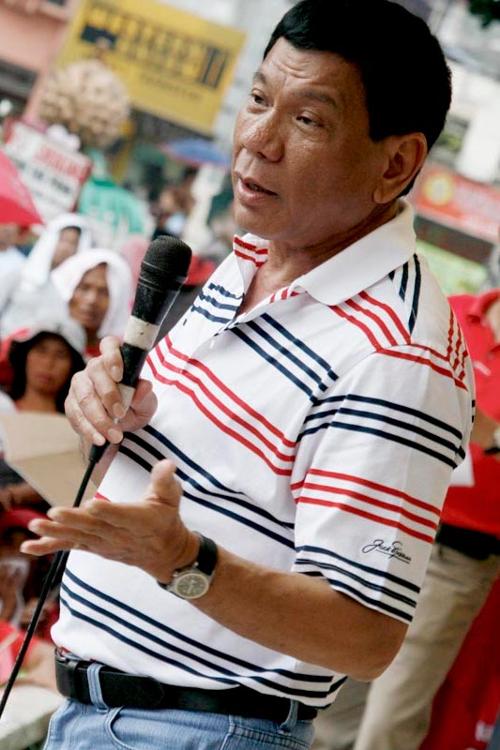 Rodrigo Duterte, PhilippinesPhoto: Keith Kristoffer Bacongco CC 2.0 Generic no changes made
Rodrigo Duterte, PhilippinesPhoto: Keith Kristoffer Bacongco CC 2.0 Generic no changes made
On November 8, 2013, the Philippines was hit by the worst typhoon to hit land worldwide. Haiyan reached wind speeds of more than 300 km per hour and caused immense damage, especially Tacloban, the capital of the island of Leyte, was very badly affected. In Tacloban alone, more than 4,000 people were killed. About 12 million people have been affected by Haiyan, and about 1 million have had to leave their homes. On June 30, 2016, President Rodrigo Duterte, known as a crime fighter against drugs, takes office. He is known for his tough handling, calling for drug dealers to be killed. In September he calls President Obama a whore's son, Obama cancels an appointment with Duterte for that reason. In 2016 and 2017, the fight against Islamic State intensifies, the island of Mindanao is partially occupied and cleared with the help of American commandos. President Duterte's relationship with Donald Trump is much better than with his predecessor Obama. In the years 2019 and 2020, there are tensions with China over territorial waters. The next elections are scheduled for May 2022.
Sources
Filippijnen
Het Spectrum
Philippines
Lonely Planet
Poppe, D. / Reishandboek Filippijnen
Elmar
Rodell, P.A. / Culture and customs of the Philippines
Greenwood Press
Wee, J. / Philippines
Chelsea House
CIA - World Factbook
BBC - Country Profiles
Copyright: Team The World of Info